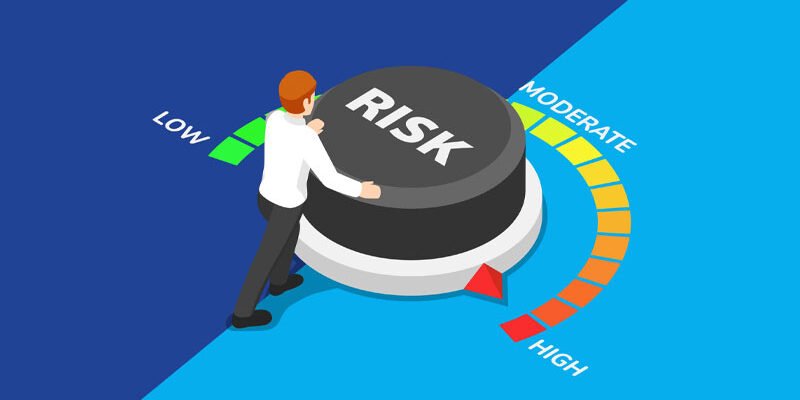Mitigating Business Risks: Strategies and Best Practices
Running a business is an exciting endeavor, but it also comes with its fair share of risks. Whether you’re a seasoned entrepreneur or just starting, understanding how to mitigate these risks is essential for long-term success.
In this article, we will explore effective strategies and best practices that can help you minimize potential hazards and safeguard your business. Let’s dive in!
Understanding Business Risks
Before we delve into the strategies, let’s first grasp the concept of business risks. Simply put, business risks are uncertainties or potential threats that can negatively impact the operations, profitability, or reputation of a company. These risks can arise from various sources, including economic fluctuations, industry competition, regulatory changes, technological advancements, natural disasters, and even internal factors such as poor management or inadequate financial planning.
Identifying and Assessing Risks
The first step in mitigating business risks is to identify and assess them. By recognizing potential threats, you can proactively develop strategies to minimize their impact. Conducting a comprehensive risk assessment involves analyzing both internal and external factors that could pose threats to your business. Here are some key areas to consider:
- Market Risks: Analyze the market conditions, including competitors, customer behavior, and changing trends. Are there any shifts in consumer preferences or emerging technologies that could disrupt your business?
- Financial Risks: Evaluate your financial health, including cash flow, debt levels, and profitability. Are there any risks associated with inadequate working capital, high debt obligations, or overreliance on a single revenue stream?
- Operational Risks: Assess the efficiency and effectiveness of your business operations. Are there any vulnerabilities in your supply chain, production processes, or IT infrastructure? Is there a plan in place to address potential disruptions?
- Legal and Compliance Risks: Stay updated with relevant laws, regulations, and compliance requirements in your industry. Are you exposed to any legal liabilities or non-compliance risks? Do you have proper contracts, licenses, and permits in place?
- Human Resources Risks: Evaluate the risks associated with your workforce, such as employee turnover, skills gaps, or labor disputes. Are you investing in employee training and development to mitigate these risks?
Remember, each business is unique, so it’s crucial to tailor the risk assessment process to your specific industry, size, and goals. By identifying and understanding the risks, you can take appropriate measures to mitigate them effectively.
Understanding of Mitigating Business Risks
- Risk Communication and Transparency: Effective risk management includes transparent communication with stakeholders. Keep your employees, investors, and customers informed about the risks your business faces and the measures you’re taking to mitigate them. Encourage open dialogue and feedback to foster a culture of risk awareness and collective responsibility.
- Cybersecurity Measures: In today’s digital world, cybersecurity risks are a significant concern for businesses. Implement robust cybersecurity measures, such as firewalls, encryption, regular software updates, and employee training on safe online practices. Protecting your digital assets and customer data is crucial to avoid potential breaches and reputational damage.
- Strategic Partnerships: Collaborating with strategic partners can help mitigate certain risks. For example, forming alliances with complementary businesses or suppliers can provide backup resources in case of disruptions. Additionally, partnering with industry associations or trade groups can keep you updated on industry trends, regulatory changes, and best practices.
- Scenario Planning: Anticipate potential risks by conducting scenario planning exercises. This involves identifying various hypothetical situations that could impact your business and developing strategies to address each scenario. By thinking ahead and having contingency plans in place, you can respond swiftly and effectively when risks materialize.
- Regular Training and Education: Invest in ongoing training and education for your employees to ensure they are equipped to handle risks. This includes providing them with the necessary skills, knowledge, and resources to identify and respond to potential threats. Encourage a culture of continuous learning and improvement within your organization.
- Customer and Supplier Due Diligence: Conduct thorough due diligence when selecting customers and suppliers. Assess their financial stability, reputation, and adherence to ethical practices. Working with reliable and trustworthy partners can minimize the risk of non-payment, delivery delays, or legal complications.
- Data Backup and Recovery: Implement robust data backup and recovery mechanisms to safeguard your critical business information. Regularly back up your data and store it securely offsite or in the cloud. This ensures that even in the event of data loss or system failures, you can quickly restore operations and minimize downtime.
Mitigation Strategies and Best Practices
Now that we have a solid understanding of business risks, let’s explore some proven strategies and best practices to mitigate them:
1. Risk Prevention and Avoidance
The best way to deal with risks is to prevent them from occurring in the first place. Implementing preventive measures can significantly reduce the likelihood and potential impact of risks. Here are some approaches to consider:
- Strong Internal Controls: Establish robust internal control systems to safeguard your assets, prevent fraud, and ensure accurate financial reporting. This includes segregation of duties, regular audits, and implementing information security protocols.
- Safety Protocols: Implement comprehensive safety protocols to protect your employees, customers, and physical assets. Conduct regular safety training, perform risk assessments, and maintain proper insurance coverage.
- Diversification: Avoid over-reliance on a single customer, supplier, or market segment. Diversify your customer base, expand into new markets, and build strong relationships with multiple suppliers to reduce dependency risks.
2. Risk Transfer and Insurance
Transferring risks to external parties, such as insurance companies, can provide a safety net for your business. Consider the following:
- Insurance Coverage: Identify the key risks your business faces and obtain appropriate insurance coverage. This may include property insurance, liability insurance, business interruption insurance, and cybersecurity insurance, depending on your specific needs.
- Contracts and Agreements: When entering into contracts or agreements with vendors, clients, or partners, carefully review and negotiate risk allocation clauses. Ensure that you’re not assuming excessive liability and that the terms are fair and favorable to your business.
3. Risk Mitigation and Contingency Planning
Despite your best efforts, risks may still materialize. Having a contingency plan in place can help minimize the impact and facilitate a swift recovery. Consider the following:
- Business Continuity Plan: Develop a comprehensive business continuity plan that outlines the steps to be taken in the event of a disruption or crisis. This includes identifying critical functions, establishing alternative supply chains, and ensuring data backup and recovery processes.
- Emergency Response Procedures: Create clear and concise emergency response procedures to address potential threats such as natural disasters, cybersecurity breaches, or public health emergencies. Train your employees on these procedures and conduct periodic drills to ensure preparedness.
4. Regular Monitoring and Review
Risk management is an ongoing process. Regularly monitor and review the effectiveness of your risk mitigation strategies to ensure their relevance and adequacy. Here are some practices to consider:
- Key Performance Indicators (KPIs):Monitoring and tracking key performance indicators can provide valuable insights into the effectiveness of your risk mitigation efforts. Identify relevant KPIs for your business, such as financial ratios, customer satisfaction scores, or employee turnover rates, and regularly analyze them to identify potential risks or areas for improvement.
- Periodic Risk Assessments: Conduct regular risk assessments to identify new risks or changes in existing risks. Keep abreast of industry trends, regulatory updates, and emerging technologies that may impact your business.
- Internal and External Audits: Engage internal or external auditors to assess the effectiveness of your risk management practices. Their independent perspective can help identify blind spots or areas where improvements can be made.
Conclusion
Mitigating business risks is a critical aspect of running a successful enterprise. By understanding the nature of risks, identifying potential threats, and implementing appropriate strategies, you can protect your business and increase its resilience.
Remember, risk management is an ongoing process that requires continuous monitoring, adaptation, and improvement. By adopting the strategies and best practices outlined in this article, you can navigate uncertainties with confidence and secure the long-term viability of your business. Stay proactive, stay vigilant, and safeguard your business from potential risks.











